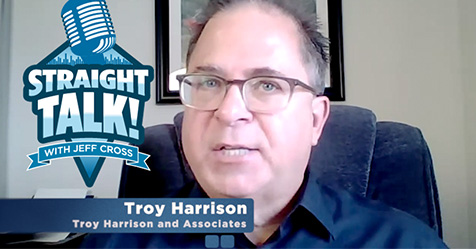Measles Outbreaks Arise in Arizona and Utah
Largest U.S. measles outbreaks confirmed in neighboring states
One of the largest measles outbreaks in the U.S. has been confirmed in the bordering areas between Utah and Arizona.
According to state health departments, 44 cases have been confirmed in Utah as of Sept. 25 while 52 cases have been confirmed in Arizona as of Sept. 23.
An NBC News investigation, done in collaboration with Stanford University, reported that much of the U.S. doesn’t have the vaccine protection to prevent outbreaks of highly contagious diseases such as measles.
These outbreaks occur just days after the Advisory Committee on Immunization Practices (ACIP) voted to change national guidelines on the measles-mumps-rubella (MMR) vaccine.
The Mohave County Department of Public Health, which borders Utah, first announced a measles case on Aug. 12. Of the 42 confirmed cases, one child has been hospitalized. As of the 2024-25 school year, not a single school in Mohave County had kindergarten classes with herd immunity protection against measles. Officials in both Arizona and Utah are urging parents to get themselves and their kids up-to-date on the measles vaccine, NBC reported.
As MMR vaccination rates dwindle, the U.S. is experiencing the highest number of cases in more than 30 years. The CDC has reported 1,514 cases and 40 outbreaks as of Sept. 23. Last year there were 16 outbreaks.
Earlier this year, CMM reported the end of this year’s measles outbreak centered in West Texas. As of Aug. 18, 762 cases of measles have been confirmed in the outbreak since late January.
Protect Your Building from Mold After a Wet Summer
After above-average precipitation levels this summer have created ideal conditions for mold to thrive, now is the ideal time to inspect properties for potential moisture damage and prevent mold growth before it escalates into costly repairs.
Mold thrives in damp environments and can easily go undetected, as it grows in hidden areas with restricted airflow such as behind walls, under flooring, or inside HVAC systems. If left untreated, mold poses a serious threat to businesses via disruptions in operations, long-term property damage, and health risks for employees and customers.
To help facility managers reduce the risk of mold growth and protect their operations, Rainbow Restoration recommended taking the following proactive measures:
- Perform regular inspections: Routinely check roofs, gutters, HVAC systems, plumbing, basements, crawl spaces, and attics, as these are areas prone to moisture that may foster mold growth. Certified experts should inspect property at least twice a year to catch problems early.
- Watch warning signs: Look for peeling paint, musty odors, or discoloration on walls and ceilings. Train your staff to recognize these indicators.
- Replace aging materials: Upgrade deteriorating components like cracked seals, faulty valves, or damaged insulation before they create hidden moisture issues.
- Maintain proper humidity levels: Indoor humidity levels should be kept between 30 to 50%. Regularly assess ventilation systems to ensure adequate air flow.
- Act Quickly After Water Events: Respond promptly to leaks, appliance failures, or flooding. Materials left wet for more than 24 hours are at high risk for mold and may require professional drying or remediation.


